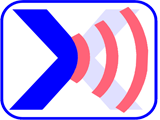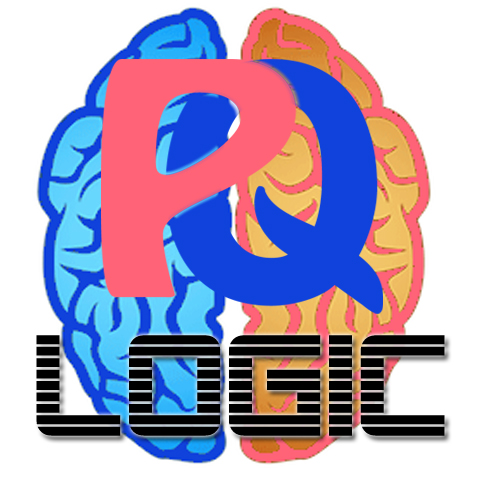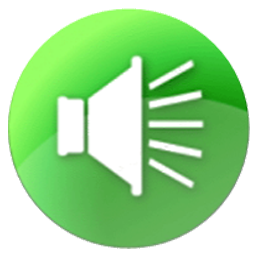 |
 |
 |
 |
 |
 |
 |
 |
PQ Logic – Kinds of Confusions – PQs DESIGN PRINCIPLES – History Of Concept
INTRODUCTION TO PCUES (also expressed as “PQs” for short) are font letter-face variations that act as pronunciation cues. By reducing the confusion involved in recognizing which of a letter’s possible sounds it is actually making in any word it might be appearing, PQs can significantly reduce the cognitive effort involved in learning to read (See: Disambiguation). These systematic variations in the appearance of letters look like morphic analogs of the sound variations they suggest (for example, barely visible grey for silent letters, bold for letter name). By improving how letters cue sounds (as the early alphabets did), PCUES reduces what most impedes and endangers the progress of beginning and struggling readers (working through letter-sound relationship confusion). 
 Modern font technology makes it possible to add another (z) dimension of functionality to ALL the letters of the alphabet. Specifically, makes it possible to print letters (paper or screen) with intensity, size, shape, and spacing variations that, while retaining unambiguous letter recognition features, convey additional information or cues about how any given letter sounds in any particular word in which it is appearing.
Modern font technology makes it possible to add another (z) dimension of functionality to ALL the letters of the alphabet. Specifically, makes it possible to print letters (paper or screen) with intensity, size, shape, and spacing variations that, while retaining unambiguous letter recognition features, convey additional information or cues about how any given letter sounds in any particular word in which it is appearing.
PCUES is based on the assumption that the orthography can itself be varied, without changing the alphabet or spelling, in ways that reduce (and in many cases remove) the confusion. PCUES accomplishes this visually-intuitively and neurologically-efficiently on the edge of letter recognition flow rather than requiring complexly-abstract post letter-recognition processing. PCUES adds a layer to the orthography that overlays its messy letter-sound relations and provides readers a new parallel pathway for both sounding out words and learning to recognize the spelling-sound patterns within them.
 Important Note: Learning PQs is not required to benefit from using OLSN or to learn to read with the Magic Ladder. Though OLSN uses PQs to systematize how it guides readers through sounding out words, the principles of OLSN are far more important than the particulars of PQs. We think PQs enable a new and more neurologically efficient pathway for learning to read. However, there is enormous paradigm inertia in the reading science field. If using a more conventional way to represent letters during OLSN’s animated sound-out can be agreed upon as a basis for scaling up OLSN, we would replace PQs accordingly. Important Note: Learning PQs is not required to benefit from using OLSN or to learn to read with the Magic Ladder. Though OLSN uses PQs to systematize how it guides readers through sounding out words, the principles of OLSN are far more important than the particulars of PQs. We think PQs enable a new and more neurologically efficient pathway for learning to read. However, there is enormous paradigm inertia in the reading science field. If using a more conventional way to represent letters during OLSN’s animated sound-out can be agreed upon as a basis for scaling up OLSN, we would replace PQs accordingly. In the meantime, PQs are an optional aid to learning to read that also makes “reading to learn” less dependent on reading skills. For those who choose to learn PQs, learning occurs by simply using OLSN and noticing how the different ways letters look correspond to the different ways they sound. |

PCUE (PQ) Logic: Rather than following the labeling conventions used by already literate linguists and orthographists (vowels, consonants, diphthongs, trigraphs, etc.,) PQs is based on the kinds of confusion beginning and struggling readers experience:
- Does it sound like its letter-name? One of the difficult confusions for developing readers is a consequence of learning the ABCs (letter-name sounds) and the ABC song. Because most children learn the ‘ABCs’ before they begin to learn to read, their brains learn (neurons wire and fire) to associate a letter with its letter name sound. When later learning to read, their brains’ response to seeing a letter is to ‘hear’ its letter name. As it is often the case that letters don’t sound like their letter names, this association confuses the process of learning to read.
- If not a letter-name, which of its other sounds? Letters have letter-name sounds and many letters have more than one non-letter name sound.
- Is it a silent letter? Some letters are not pronounced, as in the case of the ‘a’ in ‘sea’ and the ‘k’ and ‘w’ in know.
- Does it stand alone or combine with others? Combined letter sounds are in a class by themselves. The problem with combined letter sounds is recognizing that their individual letters are not to be decoded separately but combined to represent their distinctly assigned sounds.
- Does its sound run together with its adjacent letters’ sounds or is there a syllable/segment pause in sound before or after it?
PCUES: provide readers cues that let them know when a letter sounds like its letter name and when it doesn’t; whether a letter is silent, which of a letter’s non-letter name sounds it’s making, whether a letter is part of a larger unit with its own sound, and where the segments of pronunciation are in the word they are reading.
The letters of the English writing system have confusing relationships with the sounds of the English language.
To beginning and struggling readers of English, the relationships between letters and sounds are complexly confusing. Letters can sound like their letter names (ape, oatmeal, zebra), they can be silent (lamb, knight, guess), they can represent other letters’ sounds (giant, my, is), they can represent a spectrum of sounds related to their name-sound (ace, fast, fall), they can have sounds completely different from their name-sounds (clock, yes, xylophone), they can combine to represent sounds not represented by any other single letters (ch, th, wh, sh, ti, si, ci, tu,), and they can individually or in combination represent sounds of other single alphabet letters (c=k, x=z, ph = f). Working through these confusing relationships (before attention runs out of time) is what most challenges most beginning and struggling readers.
 an agency for advancing the clarity of consciousness about changes in scientific uncertainty
an agency for advancing the clarity of consciousness about changes in scientific uncertainty 
The ‘c’ sound changes as the ‘e’ shifts the ‘a’ sound from act to ace.


- Does it sound like its letter name?
- If not a letter-name, which of its other sounds?
- Is it a silent letter?
- Does it stand alone or combine with others?
- Does its sound run together with its adjacent letters’ sounds or is there a pause before or after it?
PQs DESIGN PRINCIPLES – The “P” stands for ‘phonic’, ‘phonemic’, ‘pronunciation’, and ‘parallel’. Phonic because they cue sounds, phonemic because they cue sub-sound boundaries, pronunciation because they cue which of a letter’s possible sounds to pronounce, and parallel because they create a parallel process path for decoding to draw upon.
- Ambiguity Reduction – The primary function of the PCUE system is to reduce the letter-sound correspondence ambiguity that is inherent in the ‘code’ and problematic to the process of learning to read.
- Alphabet and Spelling Independent – PCUES do not require any changes to the alphabet or to English spelling. PCUES are variations in the appearance of letters that cue readers to pronounce letters and letter combinations in ways that correspond to the sub-sounds of the words they appear in.
- Readway Signs and Phonic Serifs – PCUES are analogous to ‘highway signs’ that inform a driver’s movement in traffic. PCUES are ‘readway signs’ that inform a reader’s pronunciation while reading. Just as serifs are intended to guide the eye toward more fluid letter-appearance recognition, PCUES are intended to guide the mind toward more fluid letter-sound recognition. Another parallel is with ‘parentese’ – the toddler talk that parents engage in to slow down the pace of language and emphasize the sounds in words. Pcues provide beginning readers what parentese provides listening toddlers – extra help that guides learning.
- Font General – Pronunciation Specific – PCUES are font-general, not letter-specific. They, like ‘bold’, ‘Italics’, and ‘underline’, are general attributes of fonts that can, in principle, be applied to any letter. However, the way the cues are used to guide pronunciation is specific to a letter’s sound in the specific word it is encountered in. Just as ‘bold’, ‘italics’, and ‘underline’ are used to indicate or emphasize a specific meaning for the word or words being read, PCUES are used to indicate or emphasize a specific pronunciation for the letter or letters being read.
- Visual Distinction – PCUES are visually distinct and easy to recognize. They do not obscure underlying letter recognition features.
- Mental Resource Efficiency – PCUES are as intuitive as possible. To facilitate this, the appearance of a cue is, everywhere possible, a morphic analogy of the letter-sound variation it represents (e.g., larger for louder – faintly visible for silent – horizontally stretched to indicate a drawn out sound variation – closer together to indicate combined sounds). By making the visual difference in a letter’s appearance analogous to a corresponding difference in how it is to sound, PCUES minimize the memory and attentional processing resources required to recognize and use the cue.
- Learning Ease – the pedagogy for learning to recognize and apply each cue is very simple and direct.
- Minimal Number – The intent of Pcues is to reduce unnecessary mental processing operations. The trial-optimized system will achieve a balance between the number of cues, their ease of learning, and the ambiguity the cues reduce.
- Minimal Distraction – the cues should pose little distraction to an experienced reader.
- Paper and E-paper based – It is our long-range intention to make this system available to all beginning and struggling readers. As it will be a while before tablets and other information appliances replace paper as the primary medium of learning to read, the basic PCUES system is designed for the most low-cost common denominator: black-and-white paper printing. However, for those with smart learning appliances, PCUES can be significantly more dynamic. They can be animated to appear synchronous with auditory pronunciation (pre-recorded or text-to-speech). They can also be personalized – any number of the cues can be turned on or off to better isolate attention on just the areas of code confusion the reader is learning to work through.
- Training Wheels – PCUES act like training wheels by helping to keep readers from falling out of the flow of reading. Like training wheels, they are designed to ‘come off’ when the reader is ready. Because beginning and struggling readers will be learning to read with the normal alphabet and spelling (just getting help from the cues in decoding how they ‘sound’ together), their repeated successes with ever more familiar sub-word decoding will give them a ‘training wheels’ effect. When we later phase-out or drop the cues, their decoding/reading experience will still be applicable. Recognizing letter combinations/sub-word sounds and how they combine should be much easier (very closely paralleling the bicycle training wheels metaphor).
1991-2000 Summary
(Early examples of paper printed PQs)




















